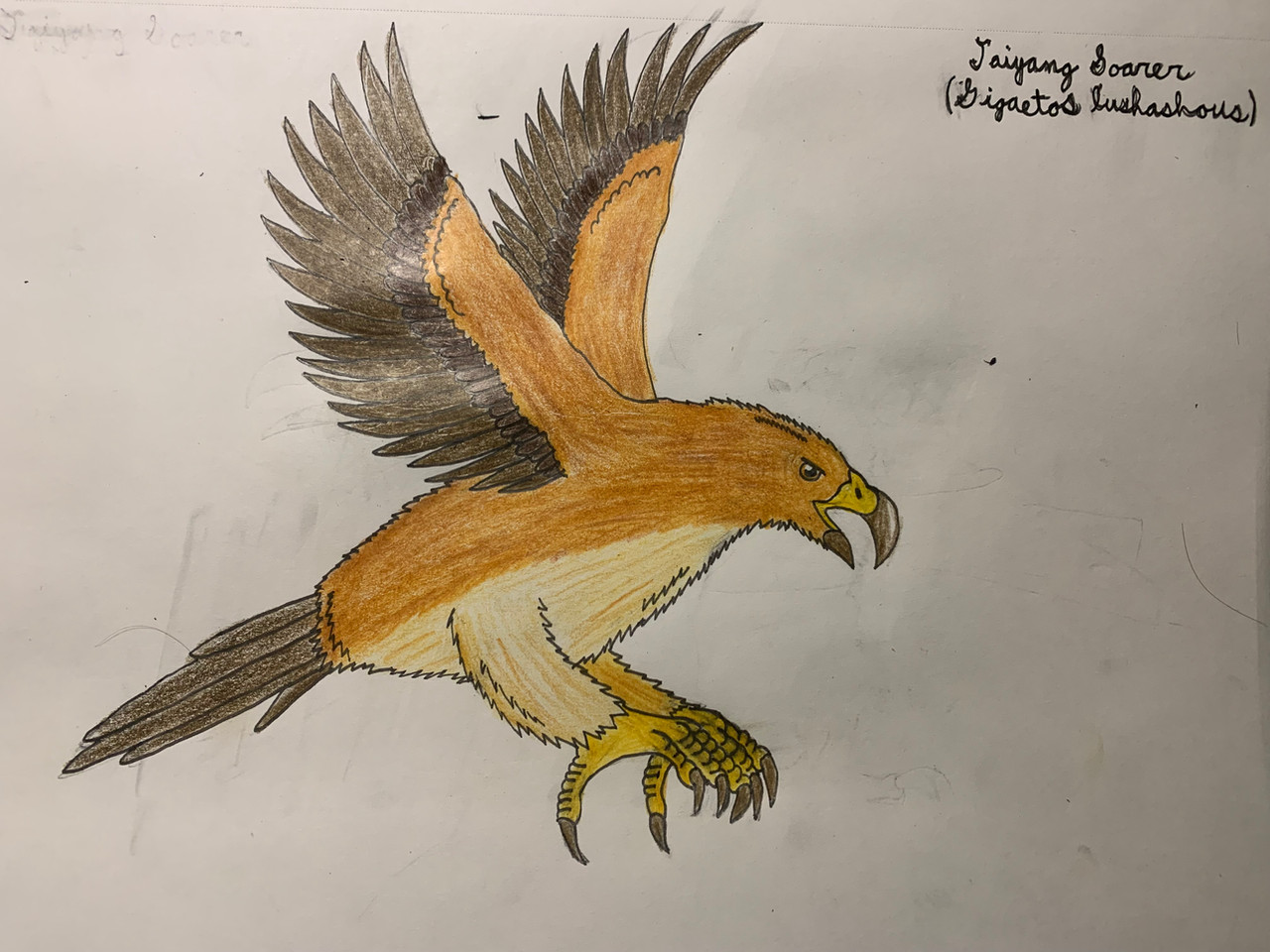HOME | DD
 ScreenSamurai — Taiyang Soarer
ScreenSamurai — Taiyang Soarer

#asia #bird #china #cliffs #desert #eagle #golden #hawk #predator #soarer #taiyang #futureevolution #apexpredator #speculativeevolution #speculativebiology #speculativezoology
Published: 2022-02-01 05:37:59 +0000 UTC; Views: 10752; Favourites: 70; Downloads: 3
Redirect to original
Description
Common Name: Taiyang SoarerScientific Name: Gigaetos lushashous
Length: 0.9 to 1.2 meters
Weight: 9 to 12 kilograms
Diet: Other birds, deer, and other grazing animals
Distribution: The dry mountainous areas of the Taiyang Desert in Asia
Lifespan: 20 to 30 years
Description: Although uncommon in the Novicene, eagles are still the apex predators of the air. Most eagles and hawks went extinct due to competition from the corvids. Still, eagles held on to their niche because they had adaptations well suited to their environments. The grandest of the eagles was the golden eagle. Although there were more massive eagles, they weren’t as adaptable and widespread as the golden eagle. The golden eagle lived in grasslands, deserts, boreal forests, and alpine environments. These eagles were one of the only eagles to survive into the Novicene from the Holocene. The most titanic of the Novicene eagles is a descendant of the golden eagle. This species is known as the Taiyang soarer.
The Taiyang soarer (also known as the deer reaper eagle) is a giant eagle species that inhabits the mountainous regions of the Taiyang Desert. This species evolved to take down some of the medium-sized animals of the desert. One of its favorite prey animals is the Asian climber deer, a species of ibex-like deer that inhabits a similar region to the soarer. They have a 3-meter wingspan, which allows them to soar across the landscape. The downside to these wings is that it is obvious when a soarer is coming. Their light coloration blends in well with the rocky cliffs of the desert. The claws of these beasts are for grasping prey and holding them until the eagle can kill them with their beak. They also grab prey and drag them down the mountain’s rocks. Thus, the eagle causes physical trauma to the deer or bird they caught. Their beak is a sharp beak to tear the skin and flesh of animals.
Unlikely most birds, these eagles hunt the hoofed mammals of the rocky cliffs of the Taiyang Desert. When a soarer is hungry, it will soar throughout the cliffs and look for a climber-deer or other animal. When the eagle sees a prey animal, the soarer will swoop down and attack the back of the deer. After doing this, the eagle will bite the eyes, neck, and head. This action allows the eagle to cause panic, severe bleeding, and blindness. If the deer falls off the cliff, it makes the job easier for the eagle. If the deer reminders standing on the rocks, the eagle will drag the deer off the cliff. After the kill, the eagle will begin to feast on the deer. It has to eat as fast as possible since other predators may steal their food from it. This incredible act of hunting evolved over several million years of evolution.


























